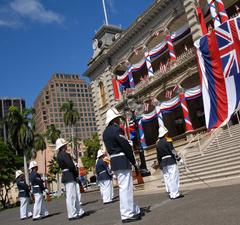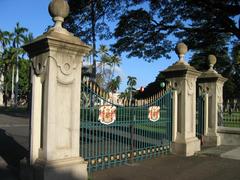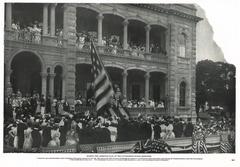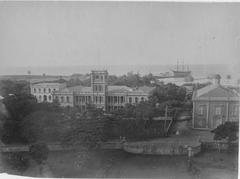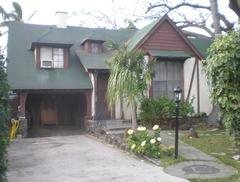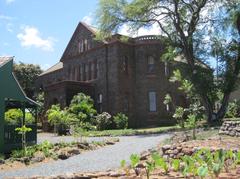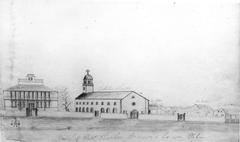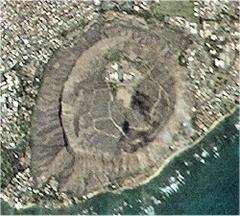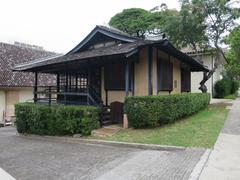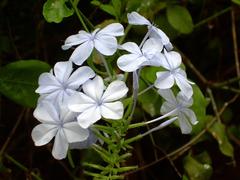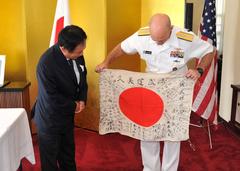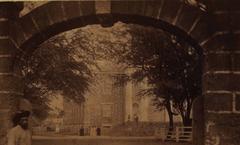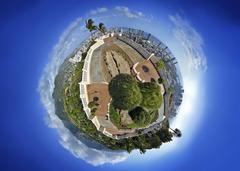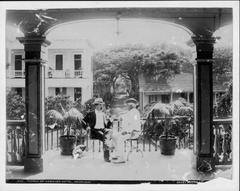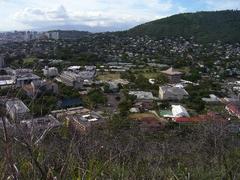
ʻIolani Palace Visiting Hours, Tickets, and Historical Significance in Honolulu
Date: 14/06/2025
Introduction: The Heart of Hawaii’s Royal Heritage
Nestled in downtown Honolulu, ʻIolani Palace is a singular treasure—America’s only royal palace and a profound symbol of Hawaii’s cultural and political legacy. Commissioned by King Kalākaua in 1882, the palace marries indigenous Hawaiian traditions with Western architectural influences, standing as a monument to both the grandeur of the Hawaiian Kingdom and the resilience of its people. Today, ʻIolani Palace serves as a museum and a living cultural site, welcoming visitors into the story of Hawaiian sovereignty, innovation, and identity (ʻIolani Palace Official Site; Smarthistory).
This comprehensive guide provides essential information for visiting ʻIolani Palace: hours, ticketing, tours, accessibility, key attractions, and tips for a meaningful experience.
Table of Contents
- Introduction: The Heart of Hawaii’s Royal Heritage
- Historical Overview
- Architectural Features
- Visiting ʻIolani Palace
- Nearby Attractions in Honolulu
- Frequently Asked Questions (FAQs)
- Conclusion & Call to Action
- References
Historical Overview
Ancient Roots and Royal Foundations
The palace grounds are historically significant, built atop an ancient heiau (temple) that has been a locus of spiritual and political power for centuries. By the early 1800s, this site was frequented by Hawaiian royalty for worship and leisure. In 1845, King Kamehameha III moved the Hawaiian capital to Honolulu and established a wooden palace, Hale Aliʻi (“house of the chiefs”), on these sacred grounds. This original residence reflected traditional Hawaiian compound layouts, emphasizing communal and ceremonial spaces (NPS PDF).
Construction and Architectural Fusion
King Kalākaua, known for his vision of modernization and cultural revival, commissioned the construction of the current palace in 1879. Designed in the American Florentine style—a blend of Renaissance Revival and indigenous motifs—the palace was completed in 1882. It stands as a testament to Hawaii’s aspirations for global recognition, boasting state-of-the-art amenities such as electric lighting and indoor plumbing before such features appeared in the White House or Buckingham Palace (Smarthistory; All Aboard Hub).
Seat of Monarchy and Political Upheaval
From 1883 until the overthrow in 1893, ʻIolani Palace was the royal residence and administrative center for King Kalākaua and his successor, Queen Liliʻuokalani. The palace hosted diplomatic events, state ceremonies, and served as a symbol of Hawaiian sovereignty. After the monarchy’s overthrow, the palace was repurposed as the seat of the provisional and later territorial governments, marking a poignant shift from a symbol of independence to one of colonial governance (NPS PDF).
Restoration and Modern Relevance
By the late 1960s, after decades of government use, the palace was in disrepair. Restoration led by the Friends of ʻIolani Palace began in 1970, returning the structure and many of its artifacts to their former glory. In 1978, ʻIolani Palace reopened as a museum and is now a National Historic Landmark—serving as a site for education, remembrance, and Native Hawaiian activism (NPS PDF; Smarthistory).
Architectural Features
Exterior Grandeur
ʻIolani Palace’s symmetrical façade, central tower, and flanking wings with open verandas are hallmarks of the American Florentine style. The use of arched colonnades, imported ironwork, and ornamental urns evoke Renaissance and Victorian influences. The palace is set within landscaped gardens featuring native plants, statues, and historic sites, including the Iolani Barracks (ʻIolani Palace Official Site; The Tourist Checklist).
Interior Highlights
Grand Hall: Visitors enter into a soaring space with a majestic Brazilian mahogany staircase, inlaid wood floors, and portraits of Hawaiian monarchs illuminated by European chandeliers.
Throne Room: Lavishly decorated in crimson and gold, the room houses the original thrones and royal insignia, serving as the site for receptions and the trial of Queen Liliʻuokalani (Travel Hawaii With Us).
Blue Room: A refined space for informal audiences and musical events, adorned with blue silk wall coverings and elegant period furnishings.
State Dining Room: Used for banquets and diplomatic functions, featuring ornate woodwork and fine china.
Private Quarters: The royal family’s bedrooms and the Music Room, reflecting their personal lives and artistic passions.
Imprisonment Room: Where Queen Liliʻuokalani was held after the overthrow, now preserved as a somber reminder of Hawaii’s turbulent history (ʻIolani Palace Official Site).
Basement Galleries: Exhibit royal regalia, jewelry, and historical documents, offering a deeper look into the monarchy’s legacy (Travel With the Greens).
Materials, Craftsmanship, and Innovations
Constructed using both local and imported materials—such as Brazilian mahogany, Italian marble, and European crystal—the palace was technologically advanced for its time. Innovations included electric lighting (installed in 1887), indoor plumbing, flush toilets, a telephone system, and a manually operated elevator (All Aboard Hub; Hawaii State Parks).
Symbolism and Cultural Importance
Every architectural detail, from the palace’s orientation to its decorative motifs, reflects the monarchy’s efforts to balance Hawaiian heritage with modernity. Today, the palace is a powerful emblem of cultural pride and ongoing efforts toward Hawaiian sovereignty (ʻIolani Palace Official Site).
Visiting ʻIolani Palace
Location & Hours
Address:
ʻIolani Palace
364 South King Street
Honolulu, HI 96813
- Open: Tuesday through Saturday, 9:00 AM–4:00 PM (last entry at 3:00 PM)
- Closed: Sundays, Mondays, and major holidays (Iolani Palace Official)
Ticket Office: Iolani Barracks, open Tuesday–Saturday, 8:30 AM–4:00 PM.
Ticketing & Reservations
- Advance Purchase Required: All tickets must be bought online in advance; no walk-ups permitted (Hawaii Guide).
- Ticket Prices (2025):
- Docent-led Tour: $30/adult
- Self-Led Audio Tour: $25/adult
- Children (5–12): $6 (audio), $10 (docent)
- Children under 5: Free (in carrier/stroller)
- Discounts: Seniors, military, Hawaii residents (Travel With the Greens)
Tours & Experiences
- Docent-Led Tours: Wednesdays and Thursdays, 9:00 AM–2:30 PM (60–90 minutes). In-depth guide-led exploration, with specialty tours available on select days (Travel Hawaii With Us).
- Self-Led Audio Tours: Tuesdays, Fridays, Saturdays, 9:00 AM–4:00 PM. Available in multiple languages.
- Basement Gallery: Included in all tours; features royal artifacts and historical exhibitions.
- Virtual Tours: 3D tours available online for remote or preview experiences (Travel With the Greens).
Accessibility & Visitor Services
- Wheelchair Access: Inclined platform lift and elevators serve all floors (DLNR Hawaii).
- Restrooms: Located on-site.
- Palace Shop: Sells books, souvenirs, and crafts; open Tuesday–Saturday, 8:30 AM–4:30 PM.
- Photography: Permitted during tours (no flash, no re-entry to rooms) (Travel Hawaii With Us).
- Smoking: Prohibited anywhere on the grounds.
Dress Code & Etiquette
- Required: Shirts and shoes. Swimwear, beachwear, and clothing with profanity are not allowed.
- Inside the Palace: Shoe coverings provided and must be worn.
- Respect: The palace is a sacred site; visitors are expected to behave appropriately and follow all guidelines (Travel With the Greens).
Planning Tips
- Visit Duration: Plan for 60–90 minutes for the tour, plus time for the grounds and shop.
- Best Times: Mornings are less crowded; book early to secure your spot.
- Group Size: Tours are capped at 15 per entry time (Hawaii Guide).
- Parking: Metered parking nearby is limited; consider public transit or rideshares.
- Weather: Palace is air-conditioned, but grounds are open-air—bring sun protection and water.
Nearby Attractions in Honolulu
- King Kamehameha Statue: Across from the palace, a popular photo spot.
- Hawaiʻi State Capitol: Insight into Hawaii’s government, steps away.
- Bishop Museum: Extensive Hawaiian cultural exhibits, a short drive away.
- Washington Place: Historic home of Queen Liliʻuokalani and current governor’s residence.
- Iolani Barracks: Historic structure and current palace ticket office (Hawaii Guide; Next Stop Hawaii).
Frequently Asked Questions (FAQs)
Q: What are the visiting hours?
A: Tuesday–Saturday, 9:00 AM–4:00 PM (last entry 3:00 PM). Closed Sundays, Mondays, and holidays.
Q: Are tickets available on-site?
A: No. All tickets must be purchased online in advance.
Q: Are guided tours available every day?
A: Docent-led tours run Wednesdays and Thursdays; audio tours are available Tuesdays, Fridays, and Saturdays.
Q: Is the palace wheelchair accessible?
A: Yes, with lifts and elevators throughout the building.
Q: Can I take photographs inside the palace?
A: Yes, in designated areas and while moving through rooms; flash and tripods are not allowed.
Q: What is the dress code?
A: Shirts and shoes required; no swimwear or clothing with profanity. Shoe covers are provided for interior spaces.
Conclusion & Call to Action
ʻIolani Palace offers a rare and immersive window into Hawaii’s royal past, architectural innovation, and enduring cultural pride. From its sacred foundation to its role in the modern Hawaiian renaissance, the palace is essential for anyone seeking to understand the islands’ unique heritage.
Plan Your Visit:
- Book tickets in advance at the official website.
- Download the Audiala app for a self-guided audio tour experience.
- Explore nearby historic sites to enrich your understanding of Hawaii’s history.
- Follow us on social media for updates, events, and exclusive content.
By visiting ʻIolani Palace, you honor the enduring spirit and legacy of Hawaii’s monarchy and people—take your place in this ongoing story of resilience and pride.
References and Further Reading
- ʻIolani Palace Official Site
- Smarthistory: ʻIolani Palace Honolulu Hawaii
- National Park Service PDF: ʻIolani Palace Historical Overview
- Hawaii Guide: ʻIolani Palace Visitor Information
- Travel Hawaii With Us: Visiting ʻIolani Palace
- Travel With the Greens: ʻIolani Palace Tour Information
- The Tourist Checklist: ʻIolani Palace Architecture
- All Aboard Hub: ʻIolani Palace Historic Significance
- DLNR Hawaii: ʻIolani Palace State Monument
- Next Stop Hawaii: Visiting Iolani Palace
- Ola Properties: Iolani Palace

